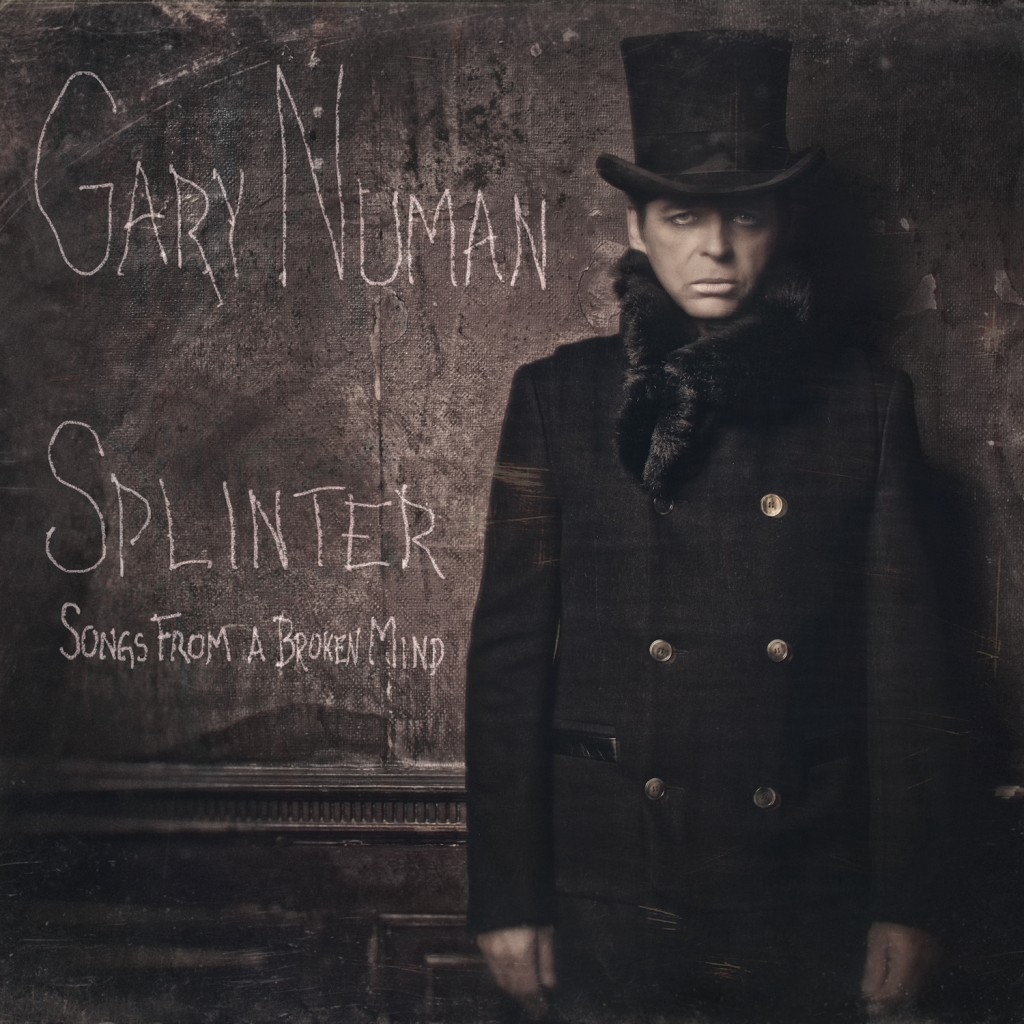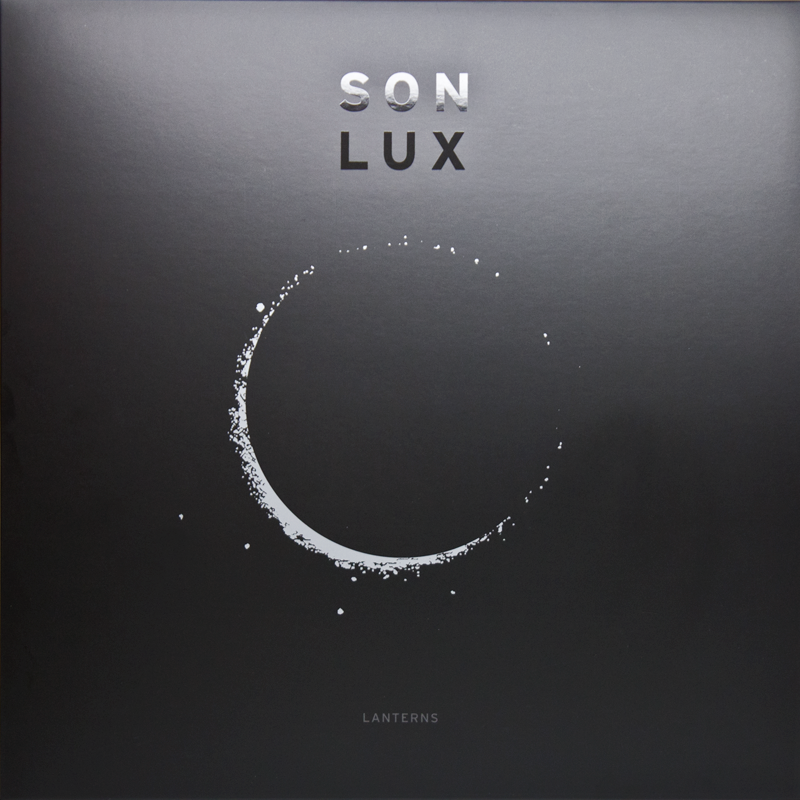Printed Edition: October 23, 2013
Gary Numan
Splinter (Songs from a Broken Mind)
Gary Numan is better known as the guy that did that ‘80s hit “Cars.” He’s been featured on countless “Where the !@#$ Are They Now” VH1 specials. But Numan didn’t go anywhere. He’s been pumping out dark electric rock records since the ‘90s. Often referred to as “Nine Inch Numan,” his second life as a hard rocker doesn’t deserve the pejorative term. This British goth-rocker is the forerunner to most electro bands. The tracks on Splinter slam in the space between the down beat. Take funk in one hand, metal in the other, then make a sandwich with some electro bread. Good, now you have a new heavy and innovative Gary Numan record. But like all the artists that move beyond their original hits, Numan’s contemporary work is often ignored by the status quo. Young musicians could learn some arrangement tricks from tracks like “I Am Dust,” which builds like a train of coal headed straight for the heart of this gritty, grinding, and grandiose record. Drum machine lovers should take note of the complex rhythms throughout. No 1-2-3-4, here. If you’re new to Numan’s rocker side, check out “Love Hurt Bleed” and “Here in the Black.” Put this record on for a fast fall drive on Highway 1, or use it to scare the crap out of trick-or-treaters. Splinter sounds like Nolan’s Batman meets Sin City. If those are your movies, this is your record.
Paul McCartney
New
After Paul McCartney’s early days behind him, instead of trying to keep up with the times, he’s just kept doing what he knew best: creating pop music that can innovate, inspire, and even surprise at times. On his appropriately titled new record, 71-year-old McCartney, who is now well past the average age of retirement, is still trying to find ways to improve his sound, demonstrating that his aspirations go beyond simply trying to replicate his glory days. Situated between the record’s two singles, “Those Early Days” is arguably the record’s most defining tune. The track is a stark and poignant exploration of McCartney’s relationship with his musical partner and equal John Lennon, while reminding the listener that while you may think you know all of the Beatles lore, McCartney is the only person on the globe who knows for sure. While George Harrison and Ringo Starr commemorated their Beatles’ experience with schmaltzy and sentimental tracks like “When We Was Fab” and “Liverpool 8,” McCartney instead sings about both the heartache and the warm recollections of a dear friend.
Editor’s Note: This soundbite differs from its original print publication.
Four Tet
Beautiful Rewind
10 years ago, Four Tet (Kieran Hebden) released what is often called his first great album with Rounds, a master-sample-work of quiet, urgent emotive electronic art, a distinction he immediately tried to counter with his follow-up album Everything Ecstatic. The same sequence has apparently repeated with Beautiful Rewind, Hebden’s follow-up to 2010’s There Is Love In You. Unlike that album’s association of dance repetitions and patient variations, Rewind is a pitch for trance-punctures, a glitched-out signal that Hebden can stray all over the place, not content to be just one thing to all listeners. Tracks like “Parallel Jalebi” and “Ba Teaches Yoga” work as the natural, expected album-to-album progression for Four Tet’s sound, juggling tracks that threaten to collapse into one another, making it sound easy. But once Rewind hits its centre (and there are hints before it), with “Kool FM,” Hebden takes his previously pleasant use of voice and world music samples and turns them into something abrasive, a radio-call of “Hey” that goes nowhere, absorbed into Hebden’s toolset. Though something that settles into more typical rhythms on repeated listens, it’s purposefully antagonistic, and something that returns in subsequent tracks, alternating with more usual sounds like “Crush” and its flute trills. Caught between a flurry of work, Rewind is an album of second-guessing, a paceless dialogue to be continued on future collaborations, but a half-measure as an album.
Son Lux
Lanterns
Lanterns opens with what sounds like a mandolin and classical choir samples, and this unlikely marriage of electronic and traditional elements sets the theme for the rest of the album. The songs slowly build from a simple melody or beat into a crowd of interlocking elements, but the overall effect is clean and modern. Every track brings together the same weirdly cohesive chaos of elements, including a saxophone and the electronically manipulated vocals of a classical soprano. It also uses steady and unique percussion, although the electronic elements that Son Lux (Ryan Lott) employs (just a hint of the dubstep we all secretly crave) bring the sound to the next level. Even with every song using the same anything-goes mix of musical instruments, each one is unique and ear-catching in its own way: “Easy” edges on creepy with a distorted, breathy sound reminiscent of Inuit throat singing, with a background of what sounds suspiciously like a theremin, while “No Crimes” marries ‘40s vocal jazz harmonies with insistent percussion. “Son Vox,” if I can trust my French lessons, translates as “his voice” and while his voice is not the most obvious feature of the album, it acts as a keystone holding everything together. All in all, Lanterns is an album of unlikely but wonderful musical combinations nearly guaranteed to pick you up and swing you around.






